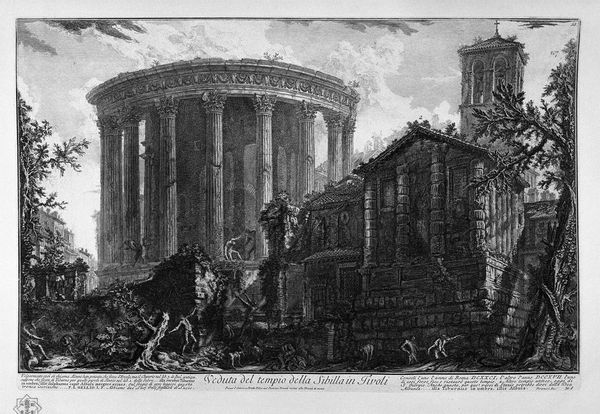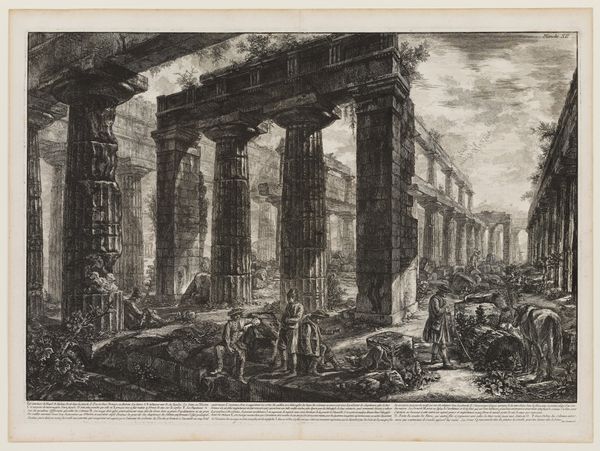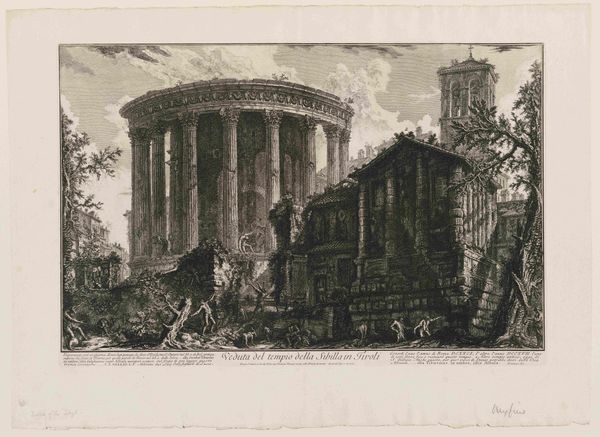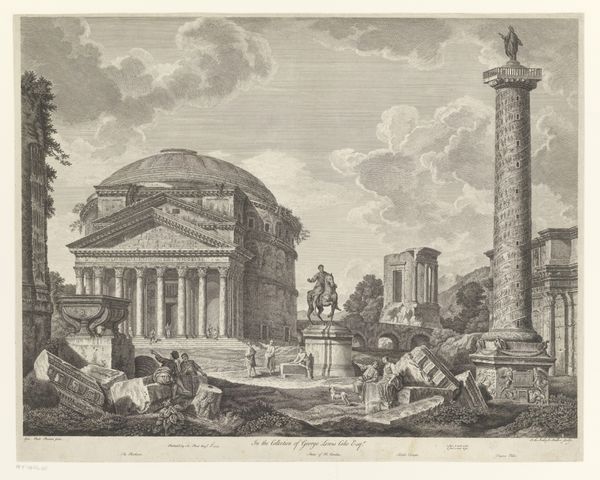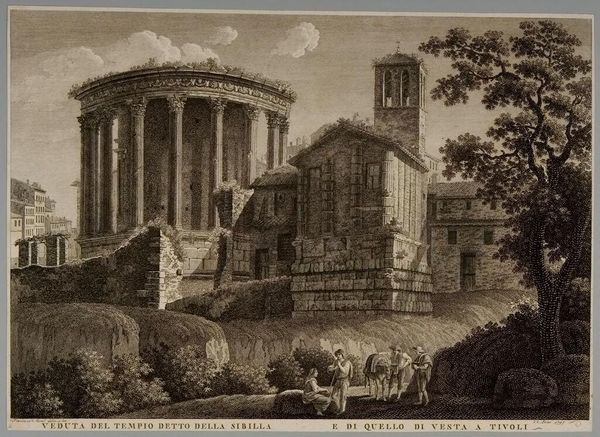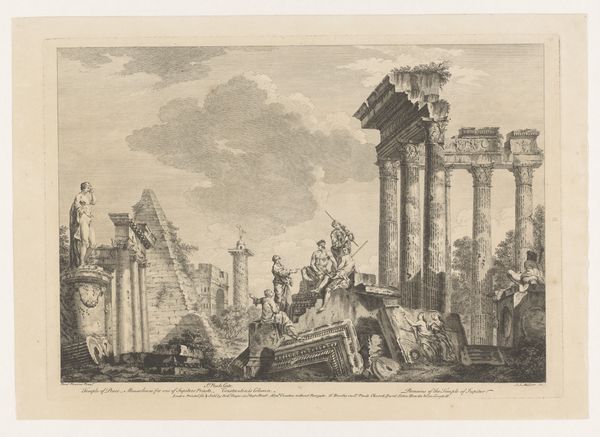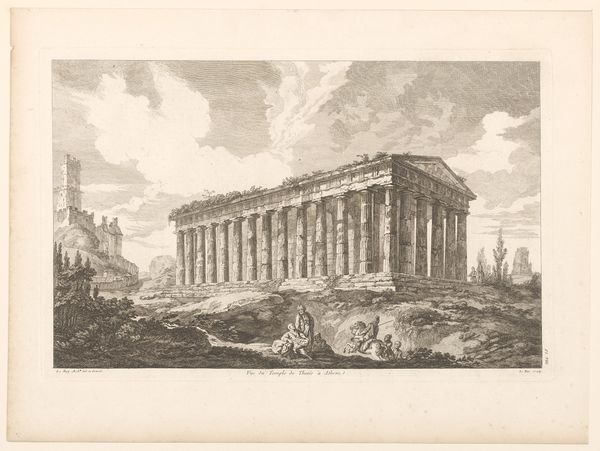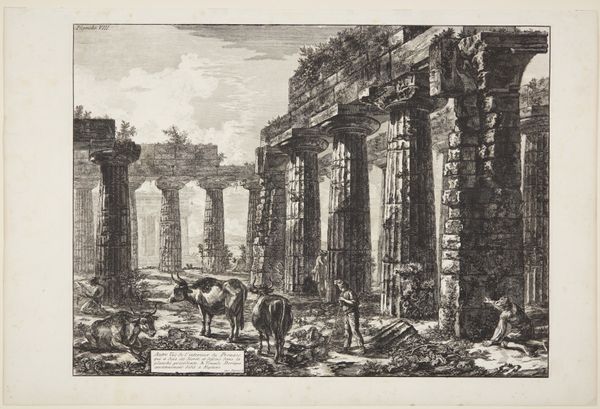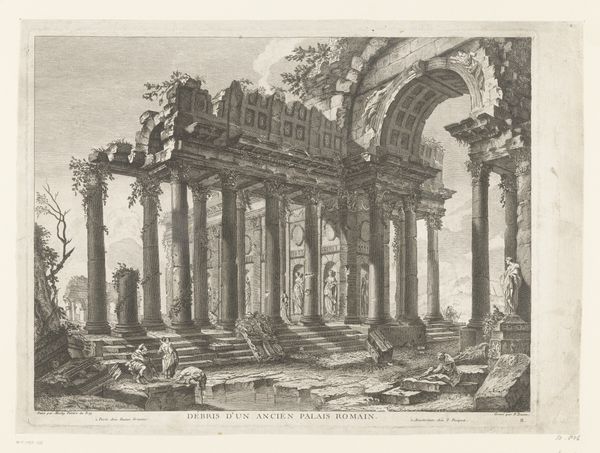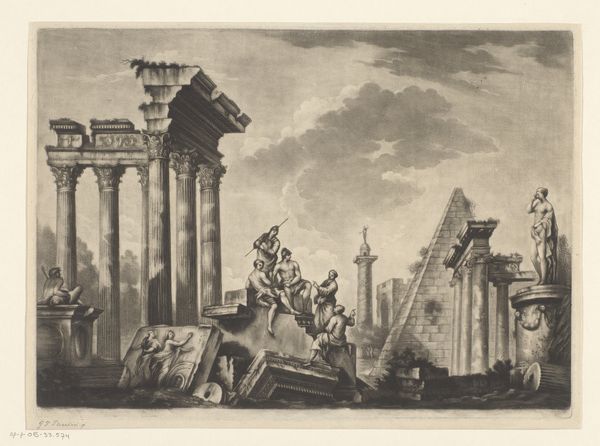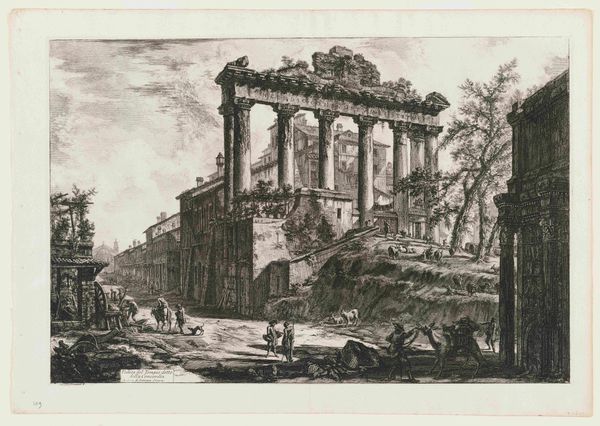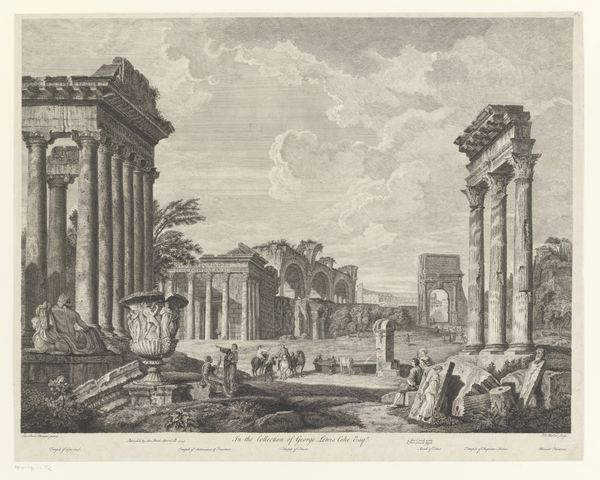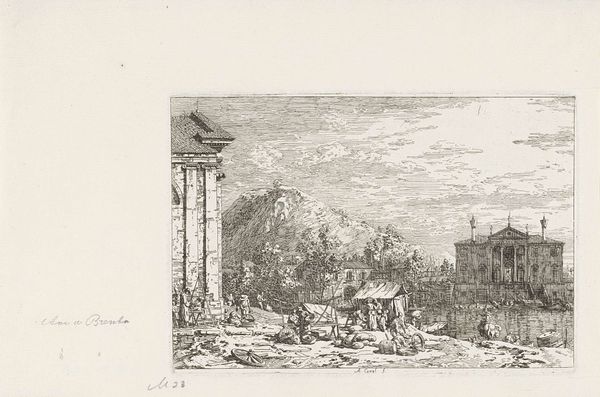
View of the Temple of the Temple of the Sibyl at Tivoli, from Vedute di Roma (Roman Views) 1756 - 1766
0:00
0:00
drawing, print, etching, engraving, architecture
#
drawing
#
neoclacissism
# print
#
etching
#
landscape
#
cityscape
#
engraving
#
architecture
Dimensions: Sheet: 21 1/16 x 29 3/4 in. (53.5 x 75.5 cm) Plate: 16 7/8 x 25 3/16 in. (42.8 x 64 cm)
Copyright: Public Domain
Curator: This is Giovanni Battista Piranesi's "View of the Temple of the Sibyl at Tivoli, from Vedute di Roma (Roman Views)", an etching and engraving from the period 1756 to 1766. The print captures a vista of classical architecture reclaiming the landscape. Editor: There's a compelling tension. At first glance, it's almost romantic with this contrast of shadow and light, the delicate details. Then you notice the people clambering on the ruins. They seem so small in comparison. Curator: Precisely. Piranesi’s technical skill here highlights a growing fascination with the antique in 18th-century Europe, especially regarding Roman grandeur. The architecture becomes a stage upon which the drama of history unfolds. Editor: Looking at it from the standpoint of labor, I can't help but think about the process of producing such a detailed engraving. What kind of workshop environment did Piranesi cultivate, and how did his assistants contribute to works of this magnitude? Was this solely his creation, or was it more of a collective project? Curator: Good point. Piranesi definitely had assistants. They would contribute to preparatory sketches, inking plates, and especially with printing itself. Etchings were produced as commercial enterprise, after all, feeding a hungry market of Grand Tour travelers keen on securing views of the ancient world. Editor: Absolutely. It shows how art operates within social and institutional frameworks, specifically how Piranesi's engravings functioned within the tourism economy of his time, shaping perceptions of Rome and its history. It served as a form of cultural capital for those who could afford them. Curator: These prints became highly influential, spreading knowledge about classical architecture across Europe, effectively standardizing architectural aesthetics and influencing Neoclassicism. Editor: So, what might feel like nostalgia for the past really became a powerful shaper of future taste and building practices. Examining these historical images helps reveal the deep ties between artistic representation, consumption, and the politics of taste. It makes one think of the ongoing dialogues surrounding cultural heritage, preservation, and accessibility. Curator: A really important point about thinking beyond just aesthetics. These prints continue to inform us, prompting debates about ruins, historical interpretation, and the very mechanisms through which imagery perpetuates or challenges social order. Editor: Indeed. They speak volumes, if you will, even to us now, separated by centuries of different perspectives.
Comments
No comments
Be the first to comment and join the conversation on the ultimate creative platform.
